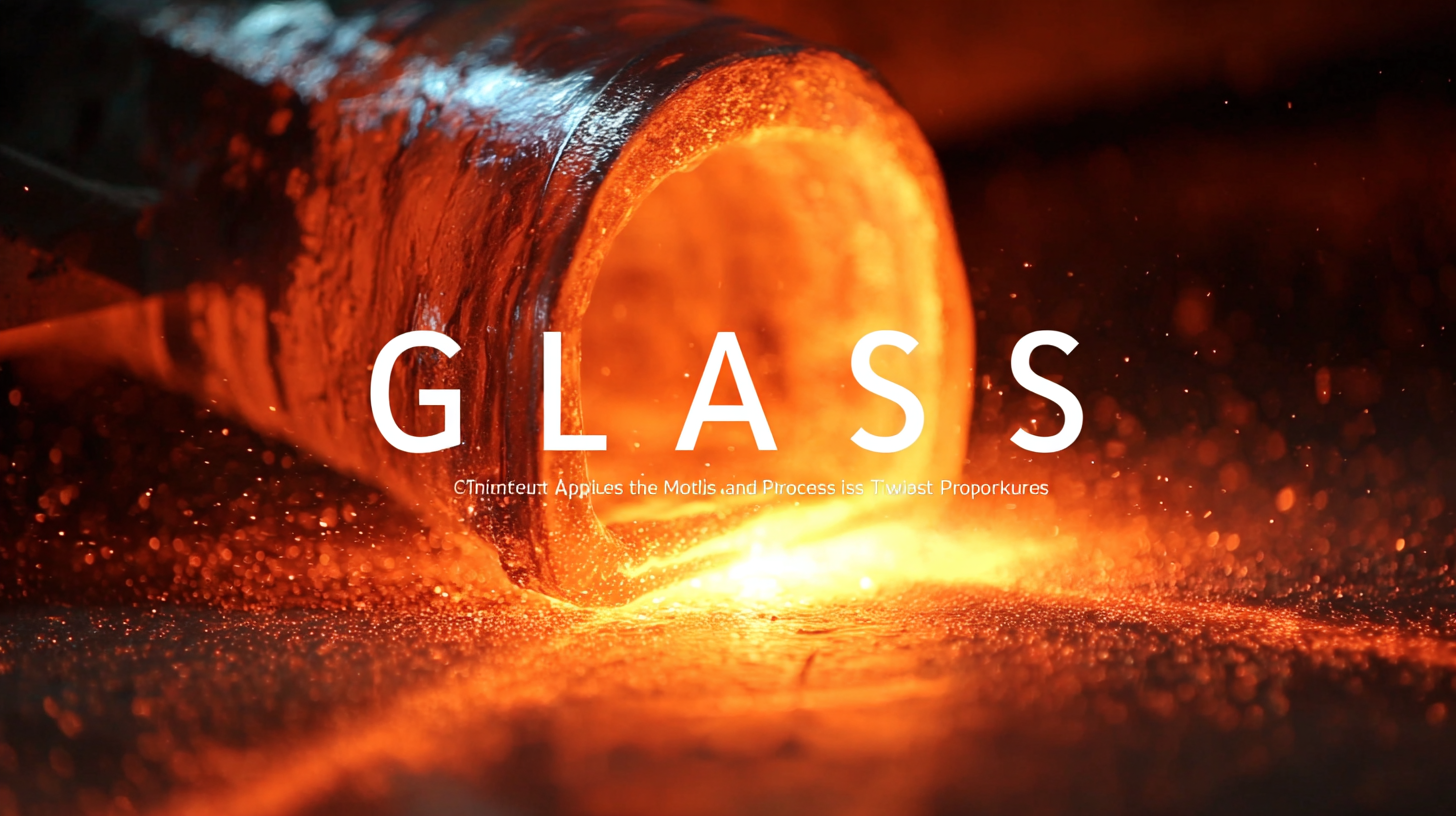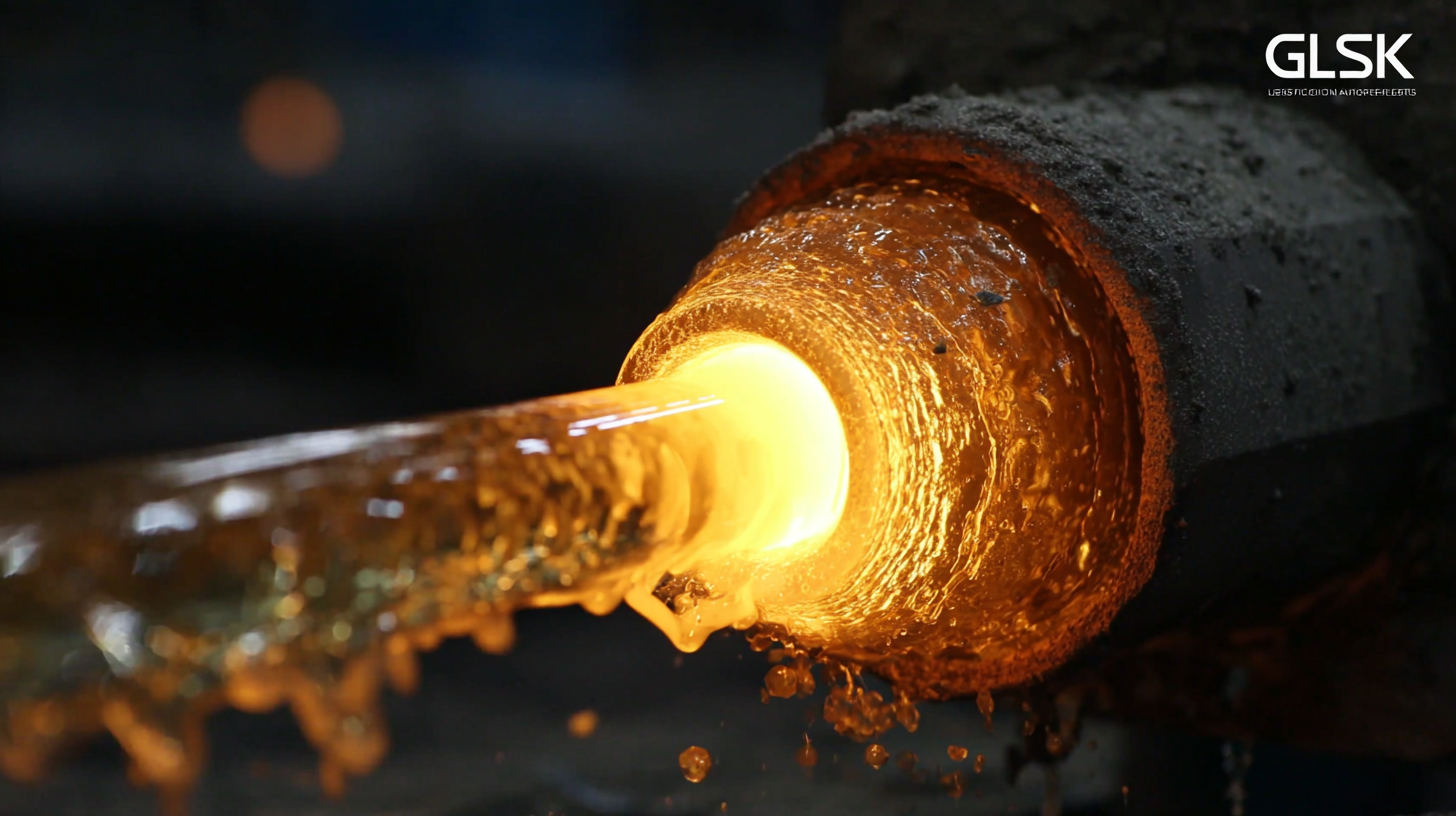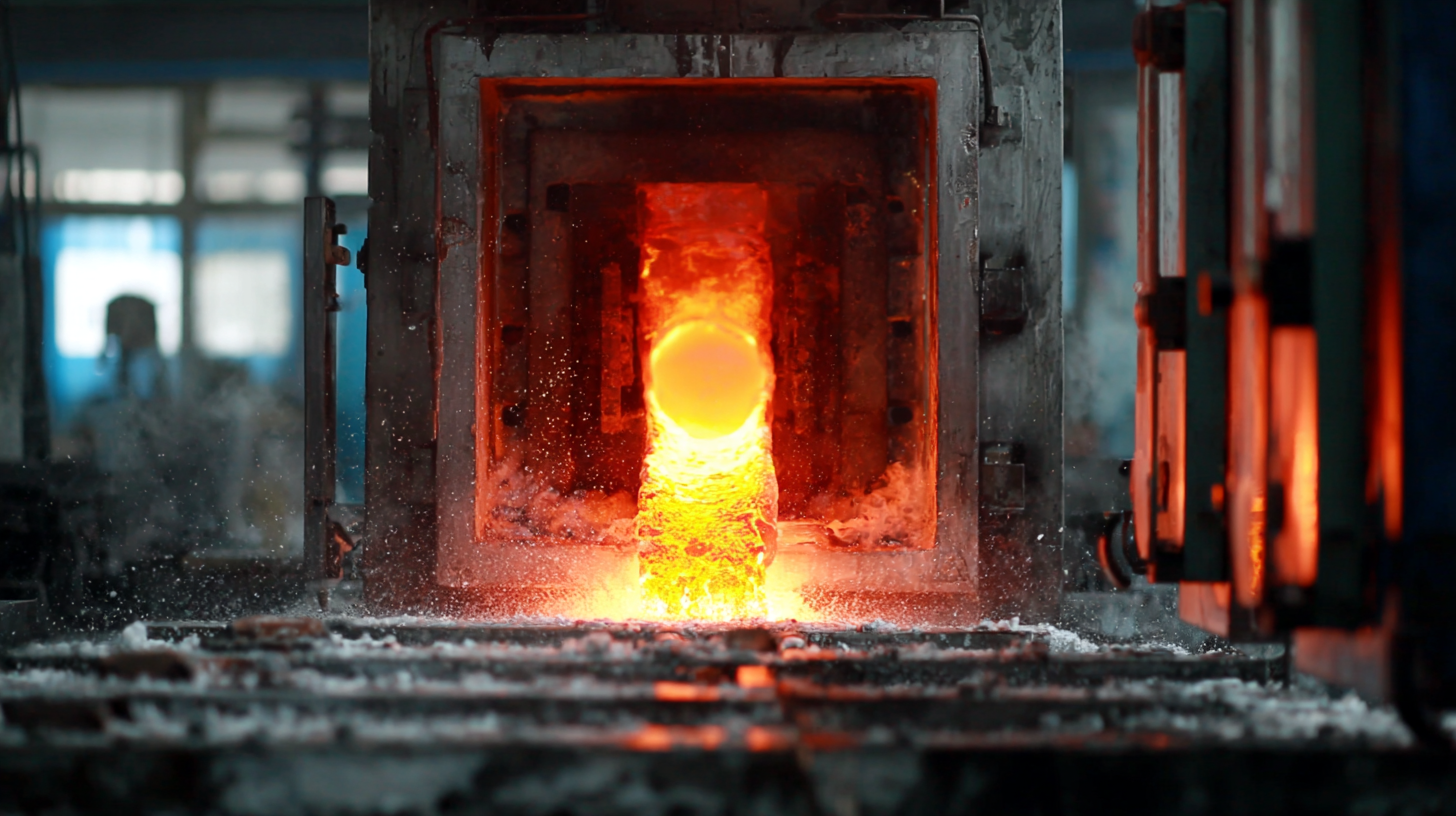
Innovative Approaches to the Best Glass Manufacturing Process
The glass manufacturing process is an intricate and evolving field that plays a crucial role in various industries, from construction to technology. According to a recent report by MarketsandMarkets, the global glass market is projected to reach over $250 billion by 2025, driven by the increasing demand for high-quality glass products and innovative applications. As the industry becomes more competitive, finding a reliable supplier is essential for maintaining quality and ensuring efficiency in production. Implementing innovative approaches in the glass manufacturing process not only enhances product durability and functionality but also streamlines operations and reduces costs. This blog will explore effective strategies for sourcing premium suppliers that can support your business goals while navigating the complexities of the modern glass market.

Innovative Materials Driving the Future of Glass Manufacturing in 2025
As we look toward the future of glass manufacturing in 2025, innovative materials are paving the way for enhanced production processes and superior product qualities. One such material set to revolutionize the industry is eco-friendly glass cullet, which not only reduces the carbon footprint of production but also enhances the sustainability of glass products. By incorporating recycled glass into the melting process, manufacturers can significantly decrease energy consumption while simultaneously producing high-quality glass with fewer raw materials.
In addition to recycled glass, advancements in nanotechnology are introducing new composites that improve the strength and durability of glass. These innovations allow for thinner and lighter glass products without compromising their integrity. Furthermore, smart glass technologies are gaining traction, with materials that can adapt to environmental conditions by changing opacity or solar heat absorption. This transformation in glass manufacturing is expected to enhance energy efficiency in buildings and vehicles, creating a more sustainable future.
Innovative Approaches to the Best Glass Manufacturing Process
| Process Type | Material Innovation | Energy Efficiency (%) | Waste Reduction (%) | Future Trend (2025) |
|---|---|---|---|---|
| Float Glass | Low Iron Glass | 20 | 15 | Increased Recycling Rates |
| Tempered Glass | Smart Glass Technology | 25 | 10 | Sustainability Focus |
| Laminated Glass | PVB Film Improvement | 15 | 20 | Enhanced Safety Features |
| Borosilicate Glass | New Coating Technologies | 30 | 5 | Multifunctional Properties |
| Glass Ceramics | Nanomaterials Integration | 40 | 25 | Next-generation Applications |
Smart Technologies Revolutionizing Glass Production Efficiency and Quality
The glass manufacturing industry is undergoing a transformative evolution, primarily driven by the integration of smart technologies that enhance production efficiency and product quality. Recent advancements in Industry 4.0 and 5.0 technologies are crucial in establishing a glass waste circular economy.
By incorporating intelligent automation and data analytics into glass recycling processes, manufacturers can significantly enhance the recovery rates of high-value glass sheets. This not only reduces waste but also contributes to sustainability goals in the manufacturing sector.
Funding initiatives such as the $33 million program aimed at advancing smart manufacturing technologies further bolster this shift. These investments are designed to develop innovative processes essential for a clean energy economy, propelling the industry towards energy-efficient solutions. Additionally, the automotive glass market is projected to reach USD 28.3 billion by 2032, bolstered by the rapid adoption of electric vehicles and innovations in smart glass. This growth reflects the increasing demand for enhanced safety standards and multifunctionality in automotive glass products, underscoring the importance of integrating smart technologies in glass manufacturing to meet evolving market needs.
Sustainability Trends: Eco-Friendly Practices in Glass Manufacturing by 2025
As the glass manufacturing industry evolves, sustainability has become a principal focus, particularly with projections indicating a significant shift towards eco-friendly practices by 2025. According to a report by the Glass Manufacturing Association (GMA), approximately 60% of glass manufacturers are expected to adopt innovative waste management techniques by 2025, contributing to a reduction in landfill waste by up to 50%. Implementing enhanced recycling methods not only decreases the carbon footprint but also enables companies to reclaim valuable materials that can be reused in glass production.
Furthermore, advancements in renewable energy utilization are reshaping the glass manufacturing landscape. The GMA anticipates that by 2025, around 40% of glass manufacturers will transition to using renewable energy sources—such as solar and wind power—in their production processes. This shift could potentially reduce greenhouse gas emissions by over 30%, highlighting a commitment to environmental responsibility. As consumers increasingly prefer products from sustainable sources, the adoption of these eco-friendly practices will be pivotal in ensuring the competitive edge and long-term viability of glass manufacturers in a rapidly changing market.

Data-Driven Decision Making: Leveraging Analytics for Optimal Production Outcomes
In today’s competitive glass manufacturing industry, data-driven decision-making is essential for achieving optimal production outcomes. By leveraging advanced analytics, manufacturers can gain valuable insights into their processes, identify inefficiencies, and enhance quality control. For example, real-time monitoring of production parameters enables companies to detect deviations from standard operating conditions promptly. This proactive approach not only minimizes defects but also reduces waste, ultimately leading to significant cost savings.
Furthermore, the integration of predictive analytics allows manufacturers to foresee potential equipment failures before they occur. By analyzing historical data and current performance metrics, manufacturers can implement maintenance strategies that prevent downtime and streamline operations. Additionally, understanding consumer trends through data analysis enables glass producers to tailor their products to meet market demands more effectively. As a result, incorporating a robust analytics framework into the manufacturing process elevates operational efficiency, boosts profitability, and positions companies to thrive in an ever-evolving market landscape.
Emerging Market Demand: Understanding Consumer Preferences in the Glass Industry 2025
 As we look ahead to 2025, understanding consumer preferences in the glass industry is crucial for manufacturers aiming to meet emerging market demand. Today's consumers are increasingly focused on sustainability, aesthetics, and functionality when it comes to glass products. Manufacturers must adapt their processes to not only create high-quality glass but also to align with the eco-conscious values of their target audience. This shift requires investments in innovative technologies that reduce waste and enhance energy efficiency, making sustainable practices a competitive edge in the market.
As we look ahead to 2025, understanding consumer preferences in the glass industry is crucial for manufacturers aiming to meet emerging market demand. Today's consumers are increasingly focused on sustainability, aesthetics, and functionality when it comes to glass products. Manufacturers must adapt their processes to not only create high-quality glass but also to align with the eco-conscious values of their target audience. This shift requires investments in innovative technologies that reduce waste and enhance energy efficiency, making sustainable practices a competitive edge in the market.
Tip: Consider conducting consumer surveys to gather insights on what features are most important to your audience, such as design, durability, or environmental impact. Utilizing this data can guide product development and marketing strategies effectively.
Furthermore, customization is becoming a significant trend in the glass industry. Consumers seek unique, personalized products that reflect their individual tastes and lifestyles. By incorporating advanced manufacturing techniques like 3D printing or digital printing, glass manufacturers can offer bespoke solutions that cater to these preferences. Establishing a direct connection with consumers through social media platforms and online forums can also help brands better understand their clients' desires.
Tip: Embrace social media engagement to build community and gather real-time feedback on product designs and innovations, ensuring that you stay ahead of consumer trends. This not only fosters brand loyalty but also encourages repeat business through tailored offerings.
